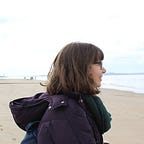#126: The Rainbow
Following the rainbow through its history
It may only be a quarter of a rainbow, but this colourful streak struck me as I glanced across the grass and I had to take a moment to admire it.
At some point, I imagine we have all tried to chase a rainbow, turning down streets and round corners to find where this colourful banner is coming from. But it doesn’t take long for us to learn that this is impossible. As Wikipedia helpfully and brutally sums up:
‘Thus, a rainbow is not an object and cannot be physically approached.’
A rainbow is merely an optical illusion. It is the refraction of sunlight into the spectrum. A rainbow does not exist in a specific place but a specific direction. It is a strange meteorological phenomenon. Unlike the wind or rain, we cannot feel it.
Yet this hasn’t stopped rainbows entering our culture. Most people are familiar with the idea that the leprechaun keeps his pot of gold at the end of a rainbow, a trope playing on the rainbow’s intangibility, on the fact it is unreachable. In Genesis, the rainbow is similarly intangible, simply a sign of God’s covenant never to destroy the earth again. Some stories, however, require the rainbow to behave far more like an object.
In Old Norse mythology, Bifröst is the rainbow bridge that connects the world of the gods to the land of men. It is guarded by the vigilant god Heimdallr, but it is breached by the giants during Ragnarök. The rainbow becomes a connection between people, but one that should not be crossed. Perhaps this is why a rainbow forms the bridge, something that men cannot attempt to climb towards to gods, both separating and connecting simultaneously.
Probably the most well-known use of the rainbow today is the LGBTQ+ flag. The flag was first created in 1978 by Gilbert Baker, an artist and drag queen. In an interview with the Museum of Modern Art Baker said,
‘We needed something beautiful, something from us. The rainbow is so perfect because it really fits our diversity in terms of race, gender, ages, all of those things. Plus, it’s a natural flag — it’s from the sky!’
Rainbows can thus mean pretty much anything: the misplaced hope for gold that will never come to anything, or the strength of a movement committed to hope and change for the future.
For me, though, as I watched that fragment of a rainbow shimmer into the sky one Sunday afternoon, it was proof of the quiet beauty of the world, a beauty that exists no matter where your personal life is entangled, a beauty that waits peacefully to be noticed.
